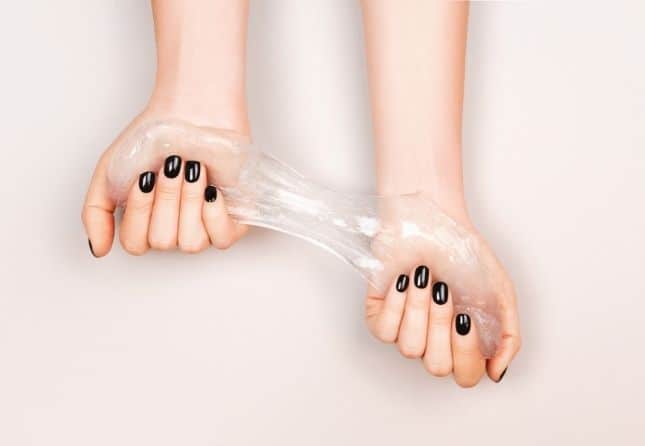Home > Hormones > Hormone issues & symptoms > Symptoms of low estrogen and how to manage them


For women, estrogen plays a key role in a variety of body functions, including the menstrual cycle, mood regulation, cardiovascular health, and brain function. You can experience a range of symptoms from mild to severe when its levels change. Low estrogen levels in particular can have a significant effect on your overall wellbeing. In this article, we’ll discuss common symptoms of low estrogen and ways you can manage them to help you feel your best.
Estrogen is one of the main sex hormones responsible for menstrual cycle regulation. It prepares your uterus for pregnancy and affects breast tissue development. But it isn’t just your reproductive system that estrogen impacts. It also has a direct effect on your mood and energy levels. Around mid-cycle or right before ovulation, your estrogen levels are at their highest. When this occurs, you may notice a range of symptoms like breast tenderness and excitement. You could also experience an increased sex drive, another effect of higher estrogen levels.
Once ovulation occurs, your estrogen levels drop significantly, and progesterone begins to rise. Some sensitive individuals can experience headaches, mood swings, heightened anxiety due to these changes. After a sharp drop, estrogen levels rise again, peaking along with progesterone in the middle of the luteal phase. However, if you don’t conceive, your estrogen and progesterone levels will drop around 3-4 days before your next period. The levels of estrogen and progesterone will remain low until the middle of the follicular phase, when estrogen begins to rise again.
It is impossible NOT to experience any symptoms around and during the period, as hormone fluctuations are significant. Thus, you may experience some mood changes or breast tenderness. Cramping pain or backache is caused by the release of a high amount of prostaglandins. Prostaglandins are hormone-like chemicals that help your uterus shed its lining.
However, sometimes due to lifestyle factors or health conditions, estrogen and progesterone levels are low when they are expected to rise and peak. Low estrogen and progesterone symptoms can include irregular periods, mood swings, and fatigue. While hormone fluctuations are normal throughout the menstrual cycle, continually having low estrogen hormone levels is not. The question is, “What causes low estrogen, and what are the symptoms to look out for?”
It might be surprising, but our lifestyle has a significant impact on our reproductive health. Factors like diet, stress, and physical activity can either help proper body functions or negatively affect them. Thus, if you’ve recently experienced significant stress, followed a restrictive diet, lost 10% or more of your body weight, overexercised, and felt exhausted, it could have led to irregular or absent periods and low levels of estrogen and progesterone.
In addition, estrogen levels can be low if you have a health condition, such as primary ovarian insufficiency, an underactive thyroid gland, or certain genetic conditions.
The first symptom during reproductive years that your estrogen levels are impacted is irregular or absent periods. Lower estrogen levels can hinder uterine lining thickening, which may cause a lighter flow.
Aging is another factor that impacts how hormones are produced. As women age, their bodies begin producing less estrogen, especially during perimenopause. These reduced hormone levels can have a big impact on the body. Let’s explore some of the most common low estrogen symptoms during perimenopause.
When it comes to symptoms of low estrogen in women, mood swings can be one of the most difficult. Although it’s one of the main sex hormones, estrogen also plays a role in mood regulation. It does this by interacting with neurotransmitters like norepinephrine, dopamine, and serotonin, and influencing the brain’s stress response. Low estrogen may cause your neurotransmitter systems to become deregulated, causing mood swings and irritability.
When estrogen levels fall, the brain thermostat becomes often confused. That means even small changes to your internal temperature can trigger your cooling mechanisms. What does that look like? A sudden feeling of heat and uncontrolled sweating. During the day, these sensations are called hot flashes, and at night they’re night sweats. The sudden, uncontrollable feeling of warmth is often considered one of the weird symptoms of low estrogen.
Vaginal dryness is another sign of low estrogen in women. Estrogen is responsible for maintaining thick, moisturized, and healthy vaginal tissue, so when it’s low, your vaginal lining can become less elastic, dry, and thin. Without proper lubrication, you may experience burning, irritation, and pain during sex and have an increased risk of developing infections. There’s many over-the-counter products to help with vaginal dryness, or your doctor may prescribe medication if the symptom is more severe.
One of the most frustrating low estrogen symptoms in women during perimenopause is weight gain. Estrogen works in numerous ways to help you maintain your weight, and when your levels drop, it can be much easier to put on the pounds. For example, estrogen helps with fat distribution regulation, which is why women with lower estrogen levels often store more body fat in their abdomens. It also contributes to metabolic health, and when your levels are low, it can be harder to burn calories and lose or maintain weight.
Estrogen also regulates appetite control, so you may feel hungrier when your levels are low. While low estrogen can make maintaining or losing weight more difficult, it isn’t impossible. To help combat the effects of this hormonal imbalance, it’s important to eat a healthy, nutritious diet and exercise daily.
Unfortunately, women with low estrogen levels can struggle with bone density issues and bone loss. One crucial role estrogen plays is in stopping osteoclast activity, cells that break down and deteriorate bone tissue. It also promotes osteoblast activity, cells that build and repair new bone tissue. When estrogen levels are low, the balance between osteoclasts and osteoblasts can become imbalanced, leading to bone loss. You can help combat bone loss by taking calcium, but it’s important to speak to your doctor, especially if you have a family history of bone density conditions like osteoporosis.
Low estrogen can have a negative impact on your overall health, leading to conditions like osteoporosis or cardiovascular disease. When it comes to your heart health, estrogen helps manage your cholesterol by lowering LDL. However, when your estrogen levels are low, LDL levels may rise, putting you at a higher risk for cardiovascular issues. You’re also at an increased chance of developing arterial plaque build-up, decreased blood vessel elasticity, and high blood pressure.
As we mentioned earlier, low estrogen may also affect your bone density, leading to osteoporosis, your stress and anxiety levels, and more. It truly impacts every area of your body. Timely management is the key to reducing or preventing serious issues from arising. However, that doesn’t mean you need treatment if you feel well as you age. You and your doctor can develop a treatment plan using hormone replacement therapy and/ or lifestyle changes to address the changing needs of your body.
If you experience new symptoms or just wondering how your hormones behave, you can utilize digital tools like Hormona. Hormona is a comprehensive hormone tracking app that helps you better understand your hormones, so you can make informed health decisions. The user-friendly design and precise tracking capabilities make it easy to monitor your hormone levels throughout the month. The Hormona system combines an award-winning tracking app with precision home testing for valuable insights in the comfort of your own home. How does it work?
Using the app, log your symptoms daily and receive personalized recommendations to help manage symptoms. For more in-depth hormone tracking, pair the app with the Hormona Wellness test kit, which tests for estrogen, progesterone, and FSH. Your app notifies you when it’s time to test based on your menstrual cycle and provides quantitative results in just 15 minutes. Everything is displayed on the app and is easy to read, giving you valuable insights into your hormonal health.
With the Hormona app, you can monitor your menstrual cycle, which allows you to adjust your lifestyle to better support each stage. For example, when you see that you’re in your luteal stage, you can focus on eating a balanced diet to combat food cravings and get plenty of rest to help fight fatigue. If you see that you’ve missed a period or that they’re irregular, you can contact your doctor and set up a medical consultation. The more insights you have into your menstrual cycle and hormones, the easier it is to monitor your overall health. That’s why hormone tracking with Hormona is such a powerful tool for all women.
Low estrogen can impact your body in numerous ways, causing symptoms like irregular periods, mood swings, vaginal dryness, hot flashes, and more. Monitoring symptoms with a hormone tracker like Hormona can give you key insights into your health and make it easier to develop a treatment plan with your doctor. Hormone education can make all the difference, helping you better understand your body and take control of your health.
There’s no such thing as a low estrogen face.
Low estrogen levels, specifically in perimenopause, are often determined by symptom onset. Therefore, if you experience sudden mood changes, feelings of depression, heightened anxiety, brain fog, or even hot flashes, it may indicate that your estradiol levels are low.
Women diagnosed with a luteal phase deficiency can experience recurrent pregnancy loss as a result of low progesterone levels. During perimenopause, if you start having heavy periods, it may mean that your estrogen levels fluctuate more than they did before and progesterone levels are low.
When estrogen is low, vitamin D is often recommended to help prevent osteoporosis, but it won’t increase estrogen levels. FSH is the hormone that impacts estrogen levels, while vitamin D only correlates with it. While one study showed a possible relation between vitamin D and estrogen levels in humans, there isn’t enough evidence to show that the vitamins increase hormone levels.
When your estrogen levels are low, you may experience mood swings, anxiety, vaginal dryness, weight gain, and hot flashes. You may also feel more tired due to trouble sleeping as a result of these symptoms.
No, vitamin B12 does not increase estrogen levels; FSH is what triggers ovaries and follicles, which control the amount of estrogen you have in your body.
To check your estrogen levels at home, you can use an at-home hormone testing kit, like the one from Hormona. The kit uses urine to determine your estrogen levels, then links the results to the app in only 15 minutes.

-


Dr Singh is the Medical Director of the Indiana Sleep Center. His research and clinical practice focuses on the myriad of sleep.

What vaginal discharge colors mean for your health Understanding vaginal discharge colors and meaning is essential for every woman at every stage of life. While some colored discharge may indicate infections, others are normal. White and clear The first discharge

Understanding perimenopause and menopause When talking about perimenopause versus menopause, it’s easy to confuse these two stages. Perimenopause is the transitional period when you move away from your peak fertility and your ovaries gradually stop releasing eggs. In turn, menstruation

Understanding perimenopause and its symptoms When it comes to aging, many women know about menopause but are surprised to learn about the transitional stage leading up to it, called perimenopause. There are three stages of perimenopause: early, late, and menopause,
| Cookie | Duration | Description |
|---|---|---|
| cookielawinfo-checkbox-analytics | 11 months | This cookie is set by GDPR Cookie Consent plugin. The cookie is used to store the user consent for the cookies in the category "Analytics". |
| cookielawinfo-checkbox-functional | 11 months | The cookie is set by GDPR cookie consent to record the user consent for the cookies in the category "Functional". |
| cookielawinfo-checkbox-necessary | 11 months | This cookie is set by GDPR Cookie Consent plugin. The cookies is used to store the user consent for the cookies in the category "Necessary". |
| cookielawinfo-checkbox-others | 11 months | This cookie is set by GDPR Cookie Consent plugin. The cookie is used to store the user consent for the cookies in the category "Other. |
| cookielawinfo-checkbox-performance | 11 months | This cookie is set by GDPR Cookie Consent plugin. The cookie is used to store the user consent for the cookies in the category "Performance". |
| viewed_cookie_policy | 11 months | The cookie is set by the GDPR Cookie Consent plugin and is used to store whether or not user has consented to the use of cookies. It does not store any personal data. |
